The Regional Botanical Garden “Roger Orellana” of the Scientific Research Center of Yucatán
Yucatán’s peninsula has very characteristic natural landscapes composed of diverse types of tropical vegetation. It is calculated that their flora has more than 2,500 species.More than 4,000 years of human occupation in the peninsula, especially in the last 150 years, has caused many of these landscapes to be altered. Many important changes in the use of these territories are reflected in the modifications the landscapes have suffered.
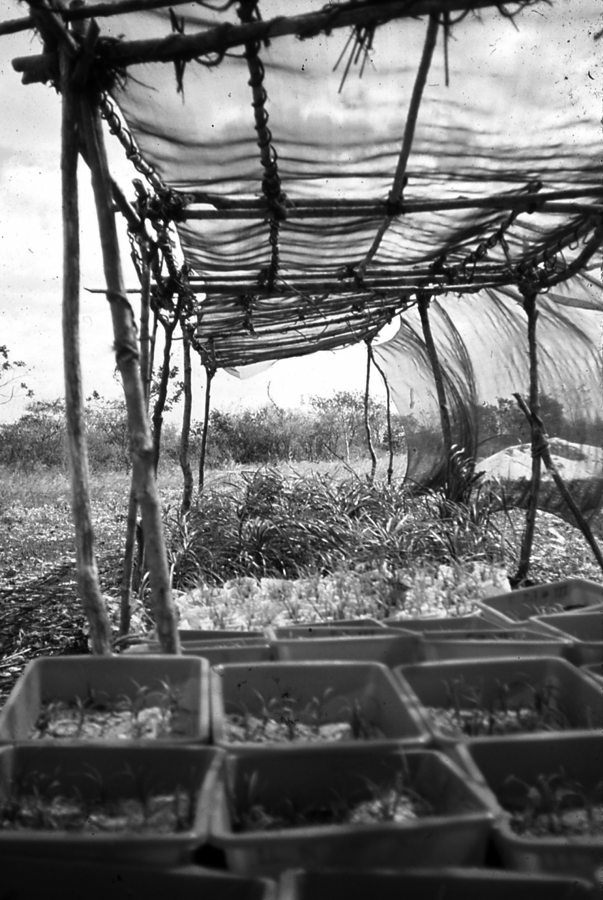
Botanical garden “nurseries”, 1985
Photography: Roger Orellana
To provide evidence about the importance of vegetation, as well as the importance of conserving, using and respecting plants, the Regional Botanical Garden was founded more than 35 years ago. When we started working in 1980 at the Scientific Research Center of Yucatán, we proposed establishing a regional botanical garden, as there was no other place in the peninsula which represented both the useful and wild flora of the region. In the year 1982 a terrain was donated to us -an old henequen installation-, where the facilities then would be located. We agreed with the CEO that at first, he would grant us the entire back zone of the terrain (almost 3 hectares of land) to establish the botanical garden. We started working on 1982, among some supervisors and academics. As years went by, we received federal, state and international funds.

First infraestructure, 1981
Photography: Roger Orellana
The criteria of establishment for the different collections in the botanical garden corresponded to the criteria established by Ángela Leiva (1981), which consisted of: a) Taxonomic, by the classification of the plants. b) Phytogeographic, which corresponds to the representations of several landscapes within the different kinds of vegetation. c) Ecological, for the life forms that it is viable to have in cultivation. d) Socioeconomic, which corresponds to the different uses for each plant (medicinal, ceremonial, industrial, etc.). Always following these criteria, the didactic collections were added. Nowadays the botanical garden has 20 collections and follows these tasks established by the BGCI (Botanic Gardens Conservation International): 1. Having collections of living plants, all identified and tagged.
2. Having conservation programs.
3. Conduct scientific research.
4. Offer environmental education programs, as well as culture and recreation programs.
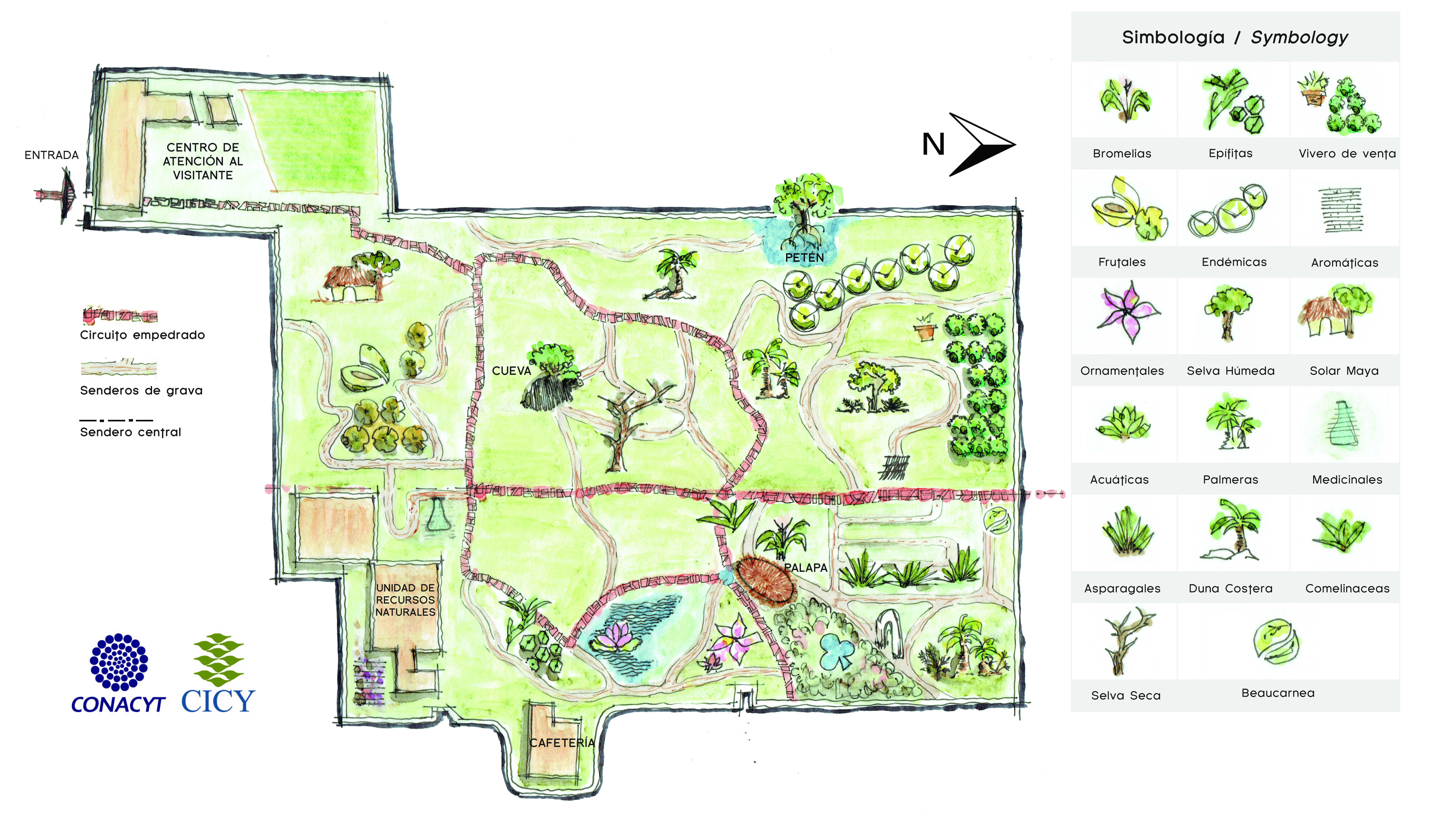
Regional Botanical Garden “Roger Orellana” Map
Illustration: Arq. Psj. Luisi Leyva
This Regional Botanical Garden has become a landmark for the study and awareness about the conservation of plants in the region. Due to the growth of the city, the garden is already a “green lung” where more than 17,000 individual plants are currently residing. They all belong to about 700 species, and most of them are native to Yucatán’s peninsula. The plants are organized in the following collections:
– Taxonomic collections: Terrestrial bromeliads, asparagales (with agaves), native and exotic arecaceae (palm trees), commelinaceae.
– Phytogeographic collections: Low deciduous jungle, rain forest, vegetation from seaside dunes, representation of a petén, endemic plants.
– Ecological collections (for habits and lifestyle): Aquatic, climbing, epiphyte, rock and geophyte vegetation. Macrophytes (tropical house), succulents (desert house).
– Socioeconomic: Ornamental, fragrant, native fruit, medicinal.
– Educational: Preschool garden of discovery, meliponary (native bees), mayan terrain, zen garden of contemplation.
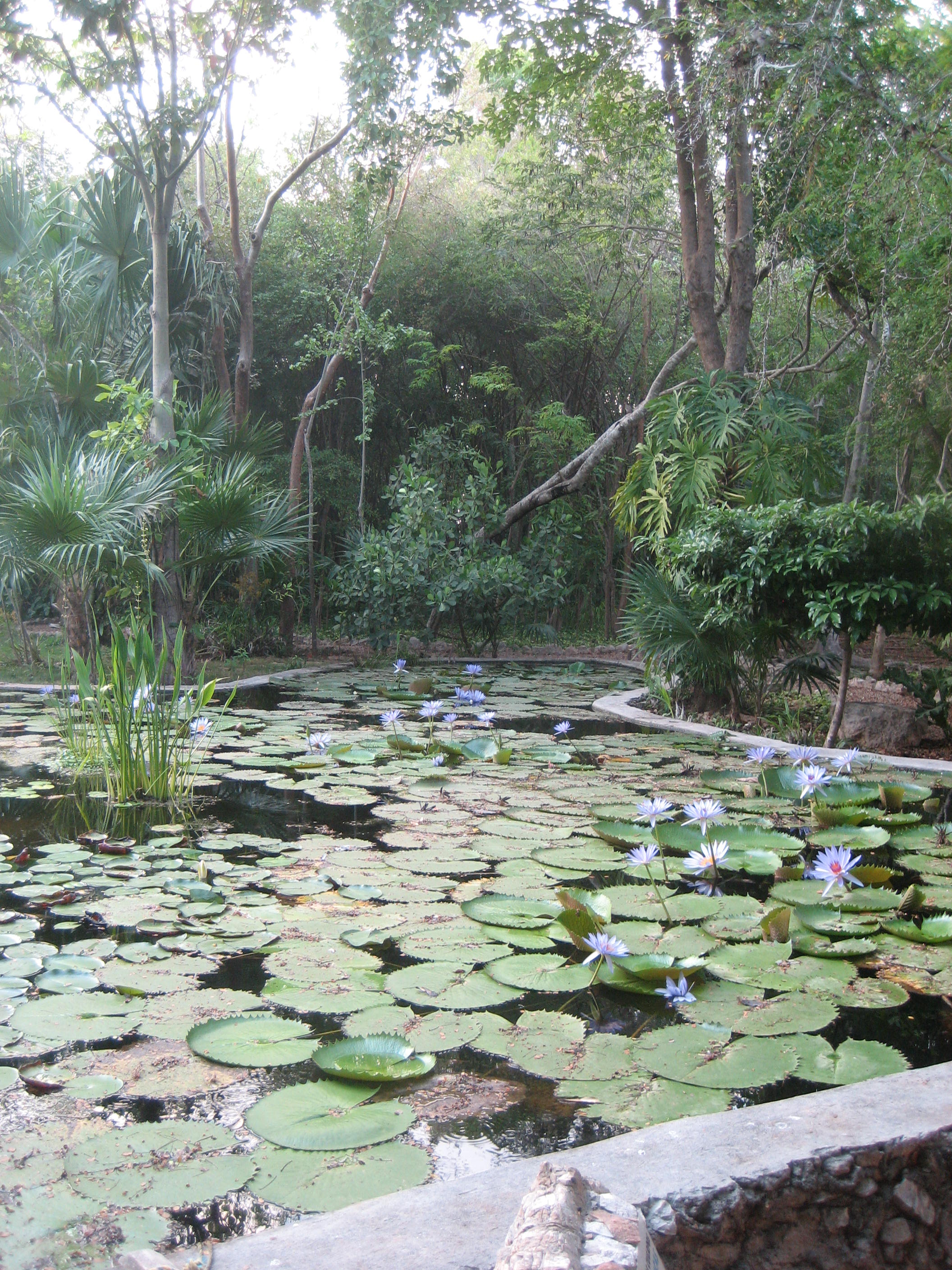
Aquatic and ornamental
Photography: Roger Orellana
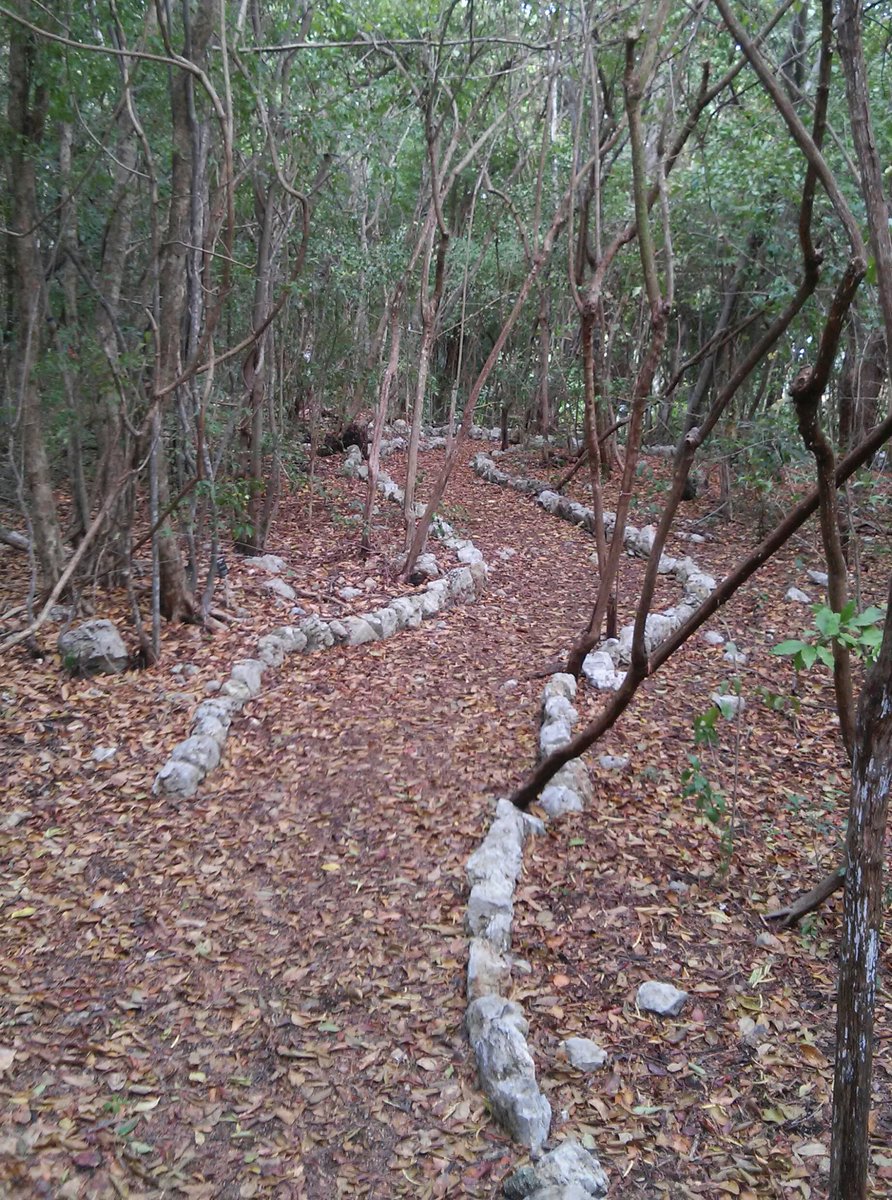
Arboretum from the deciduous lowland jungle phytogeographic criteria collection
Photography: Roger Orellana
In addition to the collections, and as part of the garden’s conservation plans, the garden has a commercial incubator in which plants are spread from 125 native species seeds, most of them from wild origin. From these, 14 species are registered in the NOM-059, in other words, they are endangered or threatened. This botanical garden has a schedule filled with both educational activities (self-guided visits, guided visits, educational materials) and cultural activities (concerts, culinary events, exhibitions). We hope this botanical garden keeps being a primordial element in the knowledge, use and respect towards plants, especially those native to Yucatán’s peninsula.
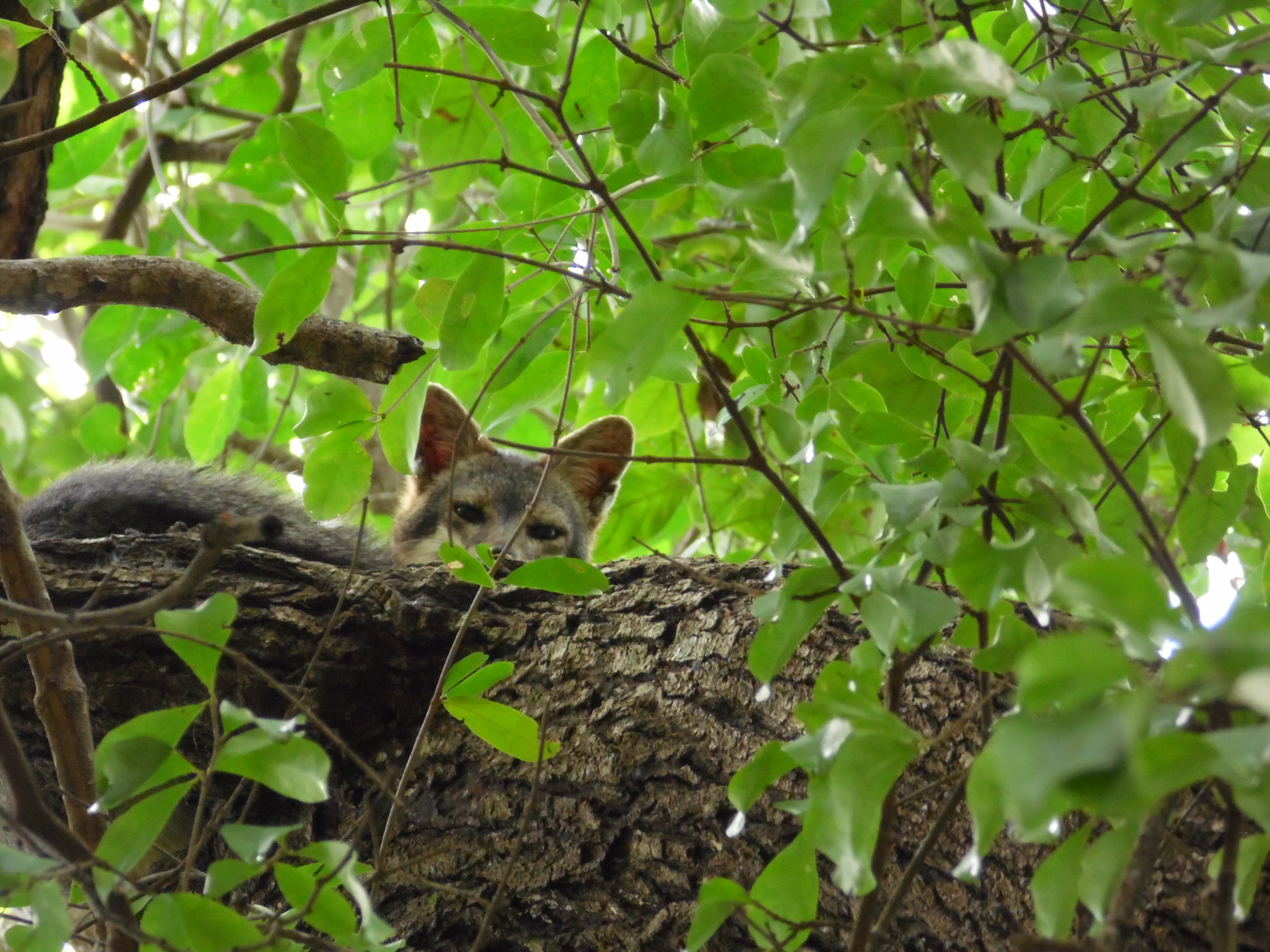
Urocyon cinereoargenteus at the Regional Botanical Garden “Roger Orellana”
Photography: Lilia Carrillo








